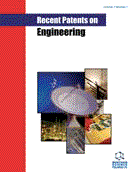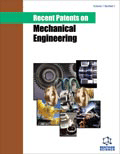Abstract
Background: The cracking load is an important parameter in the design and testing of beam structures according to the recent patents. Compared to ordinary concrete, recycled aggregate concrete components are more prone to cracking.
Methods: In this paper, the calculation method and the size effect of the cracking load for the recycled aggregate concrete beam were studied. Four recycled aggregate concrete beams with different sizes were tested by the four-point bending experiment to obtain their cracking loads. According to the comparison of the tested values and the calculated values by two existing methods, it was found that the existing calculation methods are only suitable for small-sized beam specimens. The main reason for the calculation error lies in the fact that the existing calculation method does not consider the size effect of tensile strength of recycled aggregate concrete.
Results: It is very necessary to modify the existing formulas to calculate the cracking load more accurately for large-size beam specimens. Therefore, this paper presents an improved formula for the cracking load calculation by considering the size effect. The calculated results obtained by the proposed method are closer to the test values than those obtained by the original methods.
Conclusion: It has been shown that it is necessary and reasonable to consider the size effect in the calculation of the cracking load of the recycled aggregate concrete beam.
Keywords: Recycled aggregate concrete, beam structure, cracking load, size effect, demolition, waste concrete.
Graphical Abstract
Recent Patents on Engineering
Title:Size Effect on Cracking Load of Recycled Aggregate Concrete Beam
Volume: 12 Issue: 3
Author(s): J.Y. Zhao, Q.W. Yang*C.F. Liang
Affiliation:
- Department of Civil Engineering, Shaoxing University, Shaoxing, 312000,China
Keywords: Recycled aggregate concrete, beam structure, cracking load, size effect, demolition, waste concrete.
Abstract: Background: The cracking load is an important parameter in the design and testing of beam structures according to the recent patents. Compared to ordinary concrete, recycled aggregate concrete components are more prone to cracking.
Methods: In this paper, the calculation method and the size effect of the cracking load for the recycled aggregate concrete beam were studied. Four recycled aggregate concrete beams with different sizes were tested by the four-point bending experiment to obtain their cracking loads. According to the comparison of the tested values and the calculated values by two existing methods, it was found that the existing calculation methods are only suitable for small-sized beam specimens. The main reason for the calculation error lies in the fact that the existing calculation method does not consider the size effect of tensile strength of recycled aggregate concrete.
Results: It is very necessary to modify the existing formulas to calculate the cracking load more accurately for large-size beam specimens. Therefore, this paper presents an improved formula for the cracking load calculation by considering the size effect. The calculated results obtained by the proposed method are closer to the test values than those obtained by the original methods.
Conclusion: It has been shown that it is necessary and reasonable to consider the size effect in the calculation of the cracking load of the recycled aggregate concrete beam.
Export Options
About this article
Cite this article as:
Zhao J.Y. , Yang Q.W. *, Liang C.F. , Size Effect on Cracking Load of Recycled Aggregate Concrete Beam, Recent Patents on Engineering 2018; 12 (3) . https://dx.doi.org/10.2174/1872212112666171204162332
| DOI https://dx.doi.org/10.2174/1872212112666171204162332 |
Print ISSN 1872-2121 |
| Publisher Name Bentham Science Publisher |
Online ISSN 2212-4047 |
 20
20
- Author Guidelines
- Bentham Author Support Services (BASS)
- Graphical Abstracts
- Fabricating and Stating False Information
- Research Misconduct
- Post Publication Discussions and Corrections
- Publishing Ethics and Rectitude
- Increase Visibility of Your Article
- Archiving Policies
- Peer Review Workflow
- Order Your Article Before Print
- Promote Your Article
- Manuscript Transfer Facility
- Editorial Policies
- Allegations from Whistleblowers
- Announcements





















